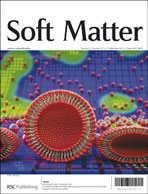Discovering crystals using shape matching and machine learning
Abstract
As the rate at which data can be amassed through computational simulation or experimental techniques accelerates, the pace of discovery becomes limited by the rate at which data can be analyzed. In this paper, a method is introduced by which new types of crystalline structures can be automatically identified from large data sets of coordinates. By deploying a hierarchy of pattern analysis techniques using shape matching and machine learning algorithms, local structures are extracted, classified, and then used to partition a data set into groups of common crystals. This method requires no a priori knowledge of what might be present in the data set. The method is applied to two data sets that contain both simple and complex crystals, including quasicrystals. We show how phase diagrams can be automatically generated and identify a crystal phase missed in prior analyses. By integrating shape matching and machine learning techniques to analyze rapidly produced databases, the discovery of new crystal structures and materials can be accelerated. This method is especially applicable to soft matter systems, where particle interactions can be exquisitely tuned and designed to drive the self-assembly of mesoscale materials with exotic structures.


 Please wait while we load your content...
Please wait while we load your content...